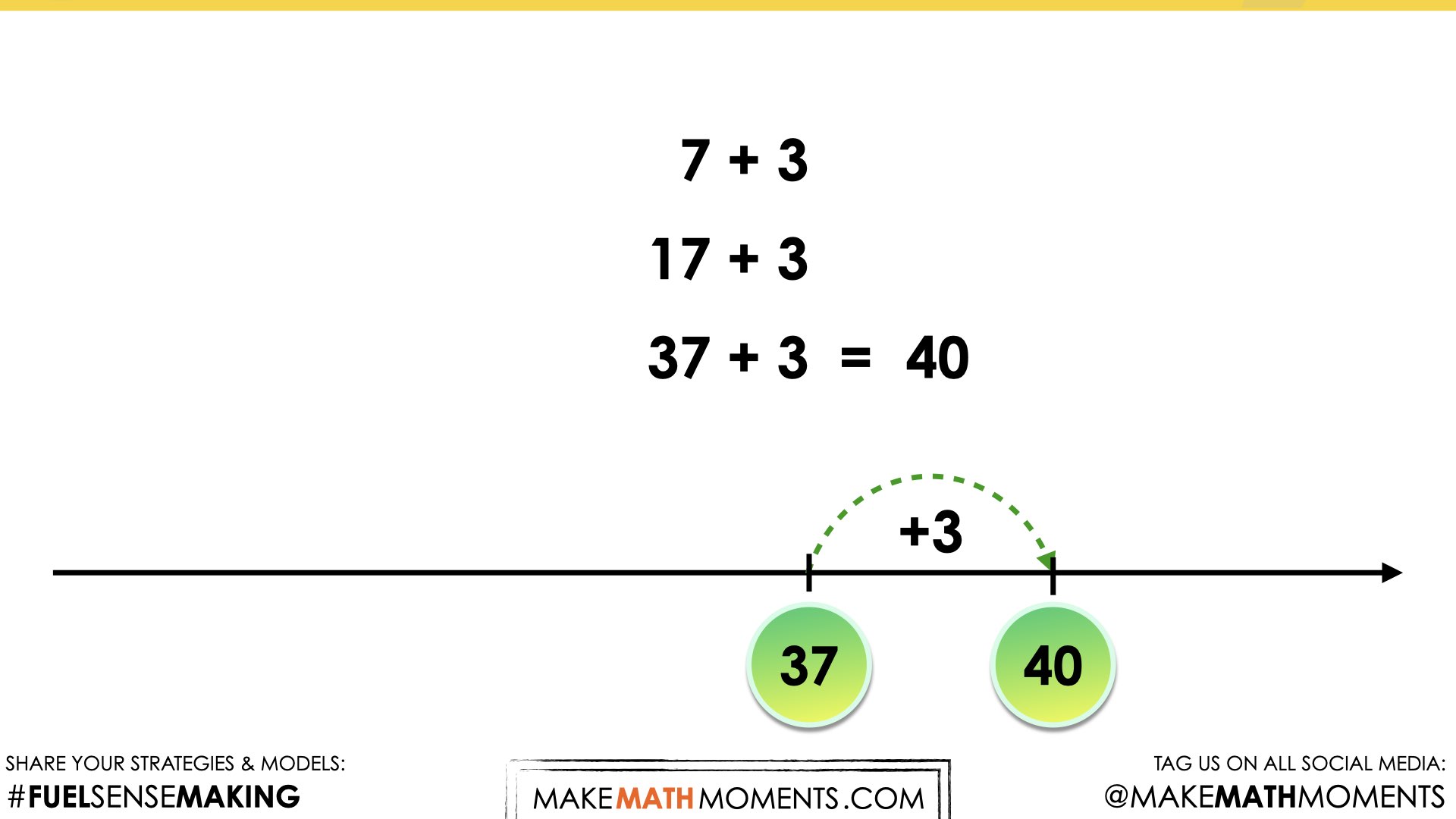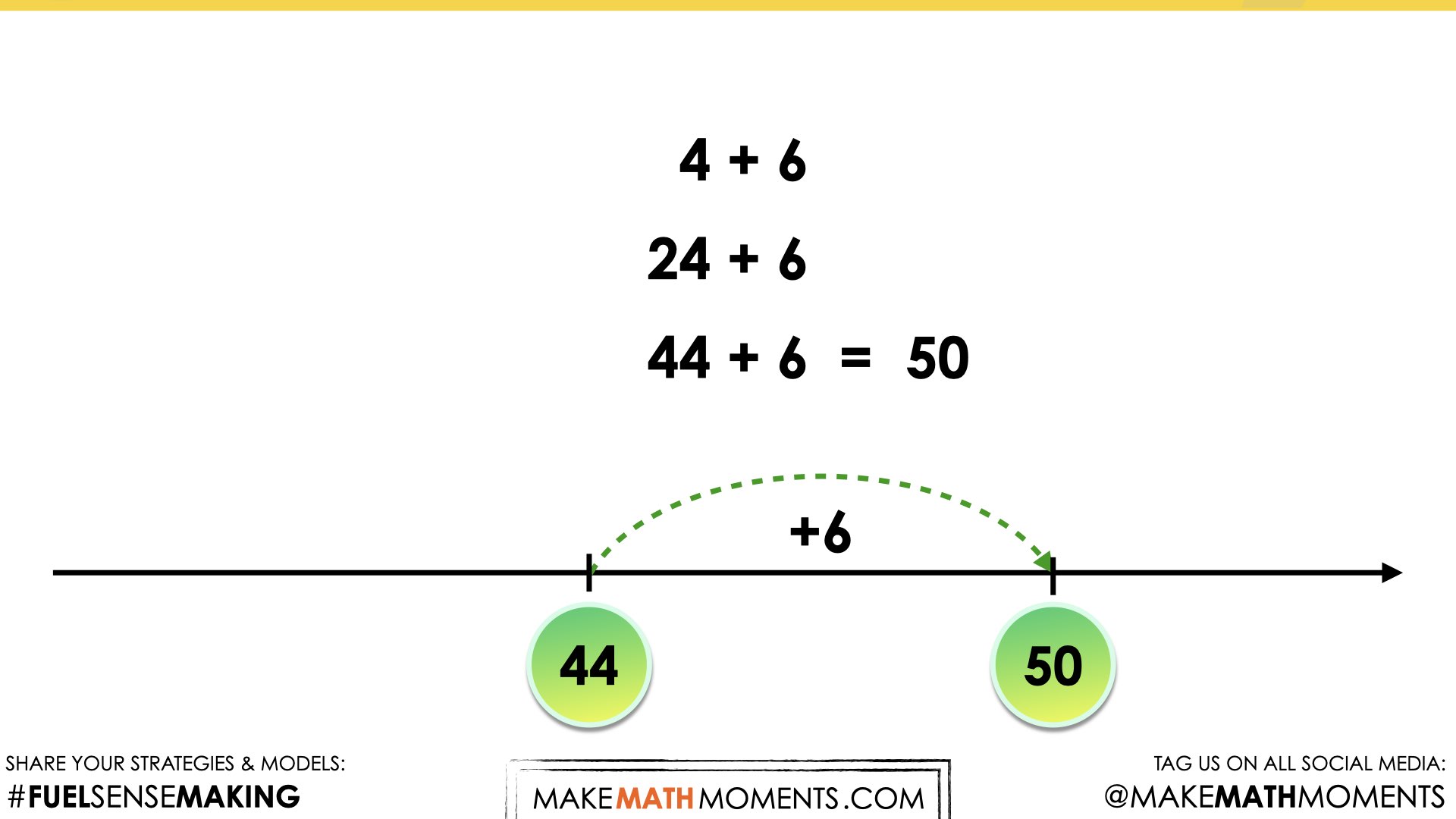AVID READER [DAY 2]
SUBTRACTION STRATEGY: ADD UP INSTEAD
Explore efficient strategies to subtract values within 50
Intentionality
Math Talk
Visual Math Talk Prompt #1
Visual Math Talk Prompt #2
Visual Math Talk Prompt #3
Visual Math Talk Prompt #4
Visual Math Talk Prompt #5
Purposeful Practice
Resources & Downloads
Educator Discussion Area
Intentionality & Unit Overview

Length of Unit: 5 Days
Access each lesson from this unit using the navigation links below
Be sure to read the teacher guide prior to running the task. When you’re ready to run the task, use the tabs at the top of the page to navigate through the lesson.
Intentionality…
The purpose of the Day 2 activities is to reinforce key concepts from Day 1. Students will engage in a string of related problems through a math talk and will have an opportunity to complete purposeful practice. The math talk and purposeful practice serve to develop a deeper understanding of the following big ideas.
Some of the big ideas that may emerge today include:
- Understanding hierarchical inclusion allows for flexible composing and decomposing of numbers
- Numbers can be decomposed by separating a whole into two or more parts
- Subtraction names the missing part in terms of the whole
- Different subtraction situations will elicit different strategies
- Number relationships provide the foundation for strategies to help students remember basic facts
- Subtraction can be used in either take away, comparison, or missing addend situations. Missing addend is explored in this task.
- Models can be used to connect concrete to abstract
Before starting this unit, students should be familiar with:
- Facts of 10 ( e.g., 6 + 4 = 10, 10 – 4 = 6)
- Flexibility when decomposing numbers (e.g., 13 can be decomposed into 10 and 3, but also 9 and 4, 8 and 5, etc)
Math Talk
To practice decomposing the subtrahend, have your students work through these problems one at a time. As you present each problem, provide students with some quiet, individual think time during which they can solve the problem and show their thinking on a dry erase board, paper, etc. Then have students share their thinking either in pairs or with the whole group.
The number strings are created to lead students through the idea of adding to get to a decade number. The first 4 prompts have 3 parts to them. The last prompt is slightly more difficult but allows students an opportunity to apply their understanding.
String 1:
7 + 3
17 + 3
37 + 3
String 2:
4 + 6
24 + 6
44 + 6
String 3:
Login/Join to access the entire Visual Prompt, downloadable slide decks and printable handouts for this lesson and all problem based units.
Prompt 4:
Login/Join to access the entire Visual Prompt, downloadable slide decks and printable handouts for this lesson and all problem based units.
Prompt 5:
Login/Join to access the entire Visual Prompt, downloadable slide decks and printable handouts for this lesson and all problem based units.
Visual Math Talk Prompt #1
Show students the following visual math talk prompt and be prepared to pause the video where indicated. The numbers in the first 2 strings are purposefully chosen to “string” the students along to make the connection between the facts of 10 and what happens when we have a value in the tens column. For example, when we are stringing the students along to the thinking that 7 + 3 = 10 is going to help us with 17 + 3. There were 10 more added to the 7 so 10 more is added to the answer.


Facilitator Note:
We want students to mentally add to the “friendly decade number” in one jump rather than having to track 3 on their fingers. Students may have to track initially but be very explicit in making the connection between the 3 facts.
“We knew that 7 + 3 was 10, so that helped us when we solved 17 + 3. It must be 20 because we are regrouping 10 from the “ones/singles” column to make another ten. The same thing happens when we are adding 37 and 3. We are regrouping to make a fourth ten”.
The number line is a good visual to demonstrate this strategy. Once students have the ability to “see” their thinking in action, it will help with articulation of the process as well as a visual to explain to students that are not developed the understanding of the strategy. In the case of relating this concept to subtraction it works well to see the space between the numbers or the difference between them.
Visual Math Talk Prompt #2
Similar to the first prompt, this string is purposefully crafted to lead students through toward the Think Addition strategy. This string uses the facts of 10 to connect to similar facts with higher values.

Visual Math Talk Prompt #3
Login/Join to access the entire Visual Prompt, downloadable slide decks and printable handouts for this lesson and all problem based units.
Visual Math Talk Prompt #4
Login/Join to access the entire Visual Prompt, downloadable slide decks and printable handouts for this lesson and all problem based units.
Visual Math Talk Prompt #5
Login/Join to access the entire Visual Prompt, downloadable slide decks and printable handouts for this lesson and all problem based units.
Purposeful Practice
Small Group Game
Login/Join to access the entire Teacher Guide, downloadable slide decks and printable handouts for this lesson and all problem based units.
Small Group Assessment Opportunity
Login/Join to access the entire Teacher Guide, downloadable slide decks and printable handouts for this lesson and all problem based units.
Resources & Downloads
Login/Join to access the entire Teacher Guide, downloadable slide decks and printable handouts for this lesson and all problem based units.
Educator Discussion Area
Login/Join to access the entire Teacher Guide, downloadable slide decks and printable handouts for this lesson and all problem based units.
Explore Our 60+ Problem Based Units
This Make Math Moments Lesson was designed to spark curiosity for a multi-day unit of study with built in purposeful practice, number talks and extensions to elicit and emerge strategies and mathematical models.
Dig into our other units of study and view by concept continuum, grade or topic!


